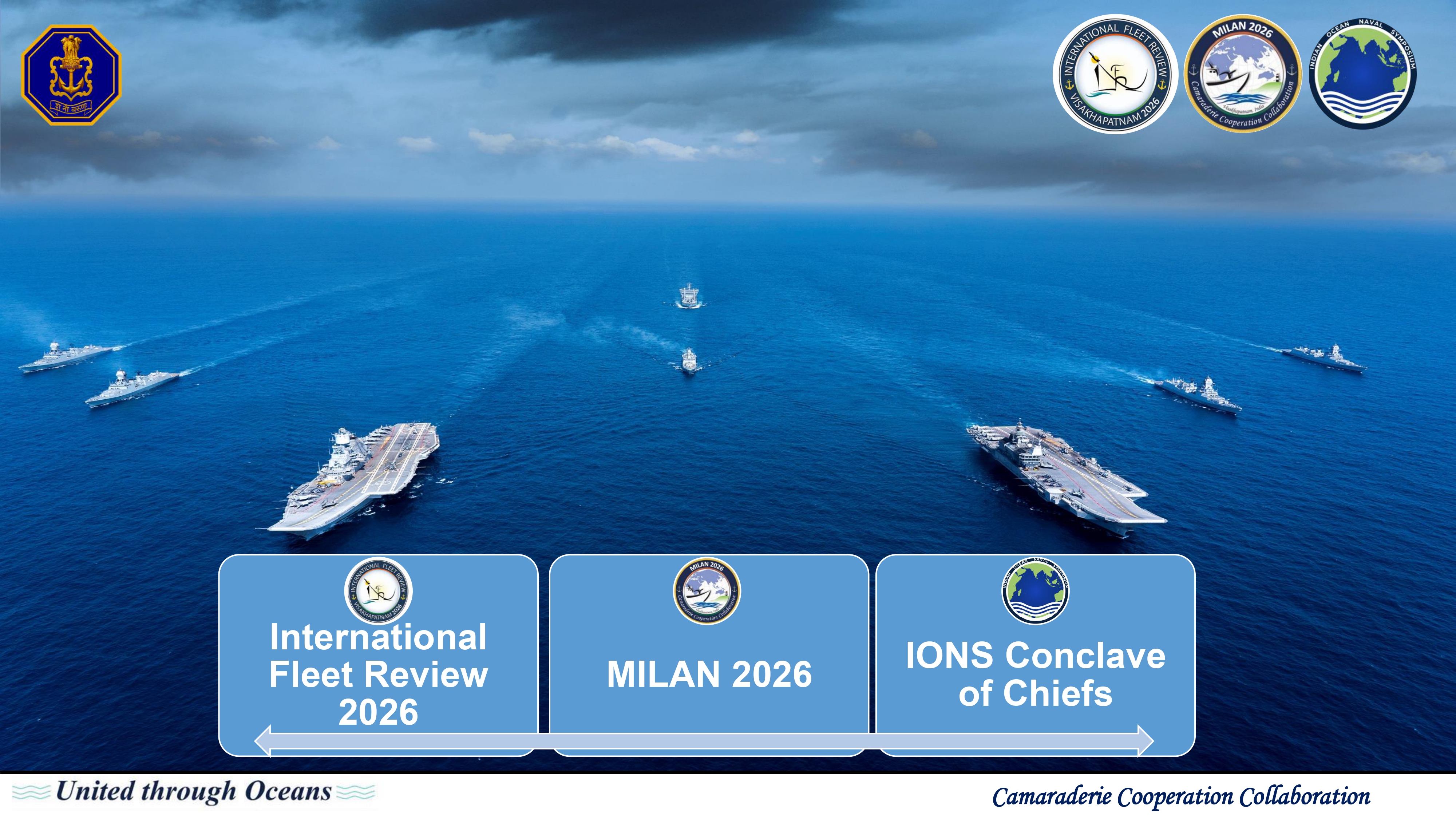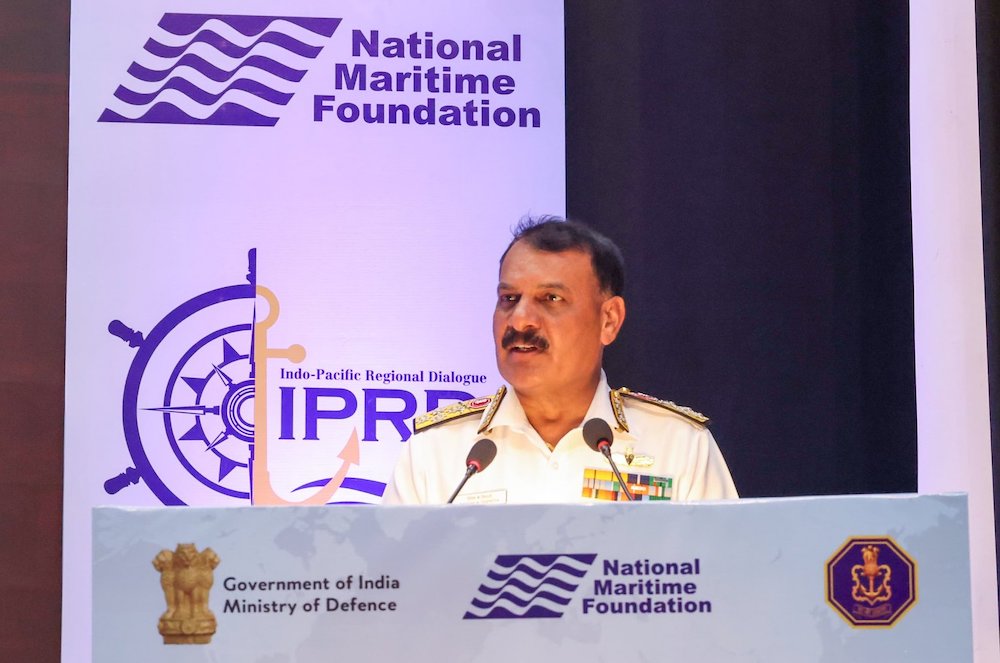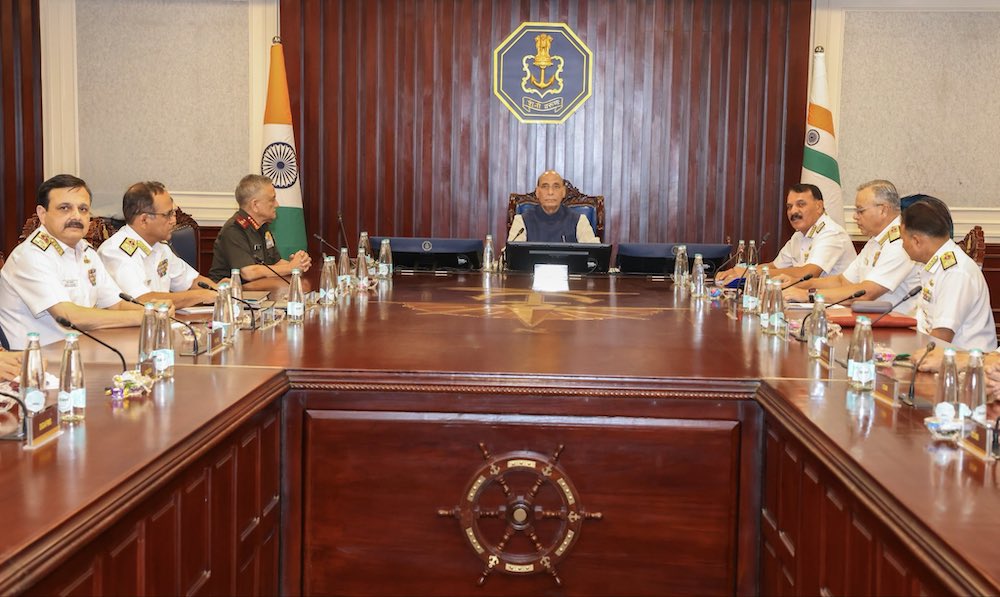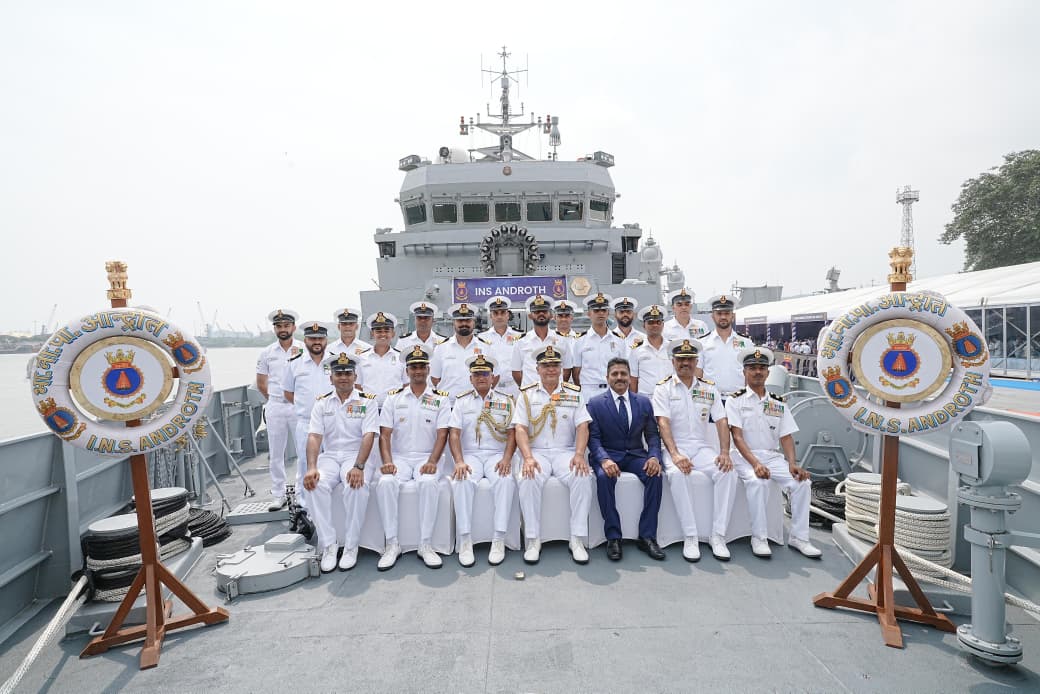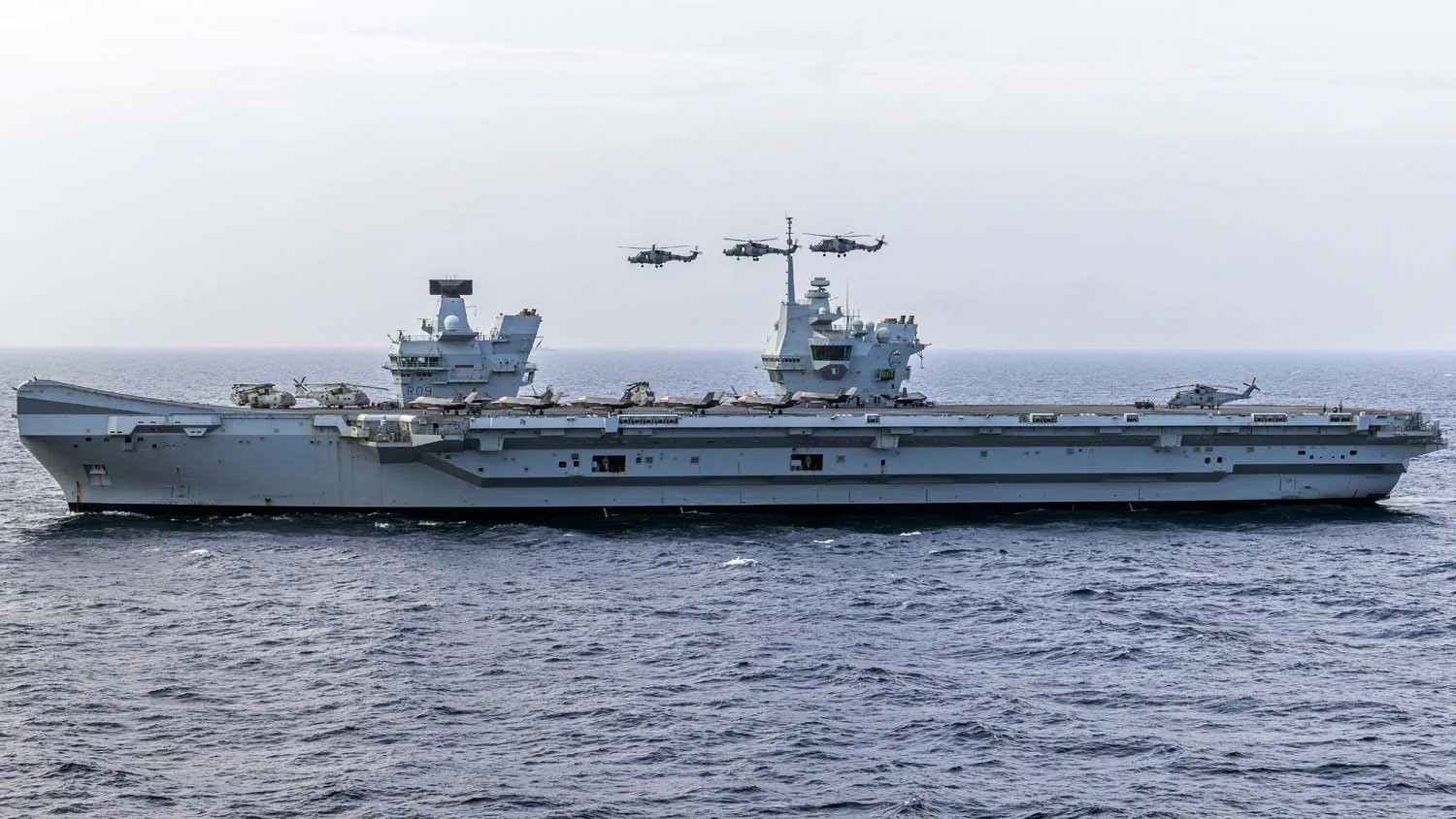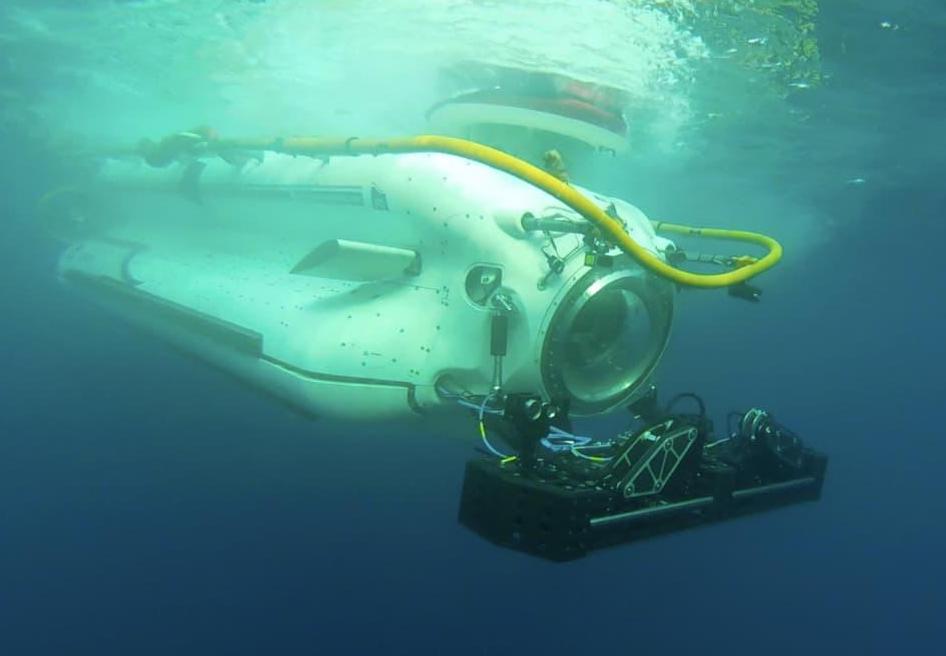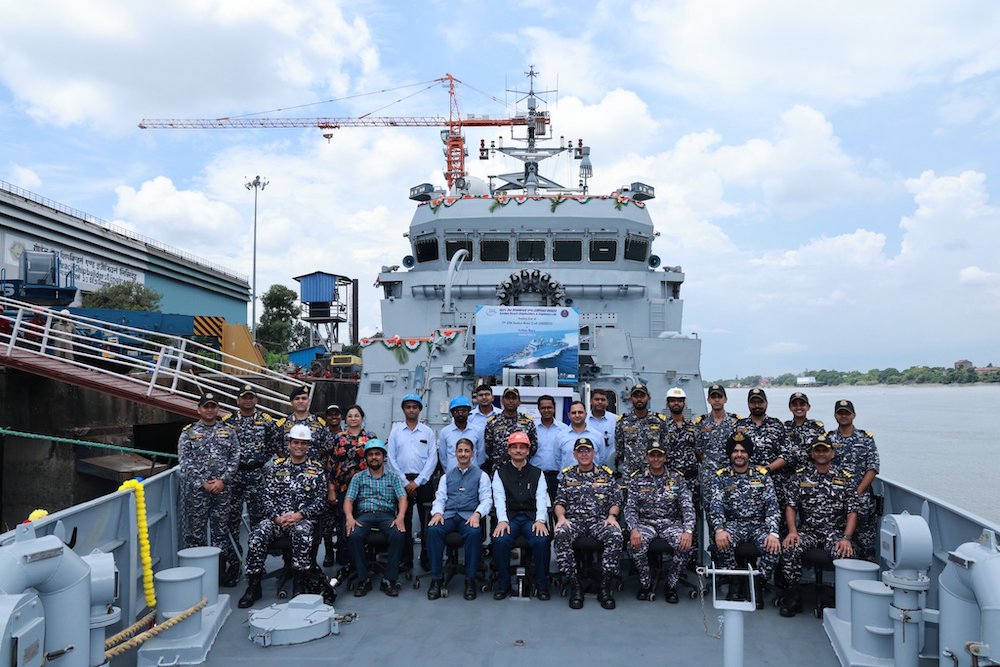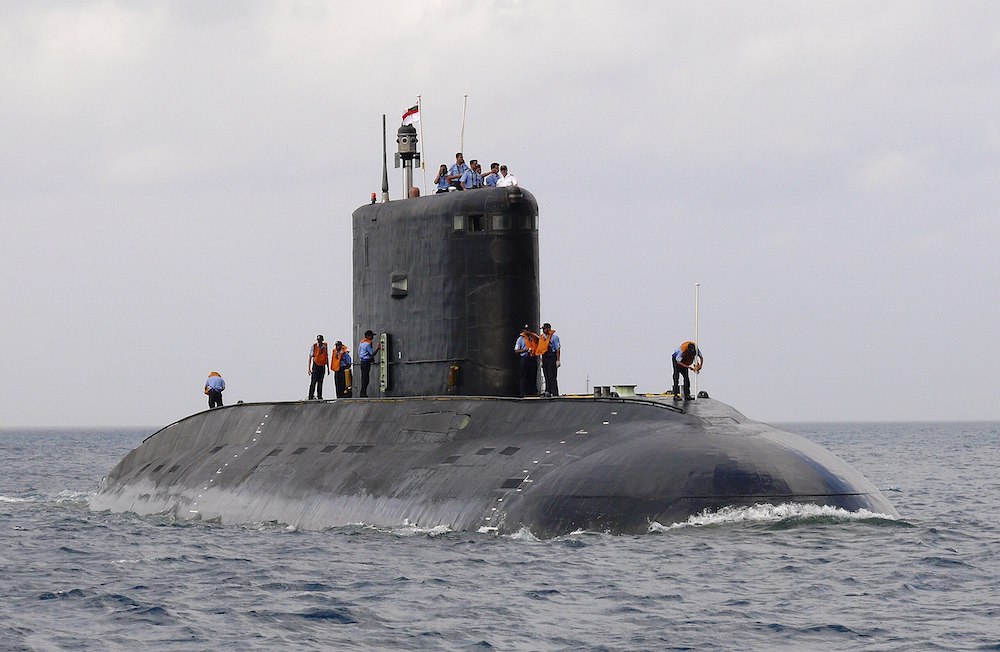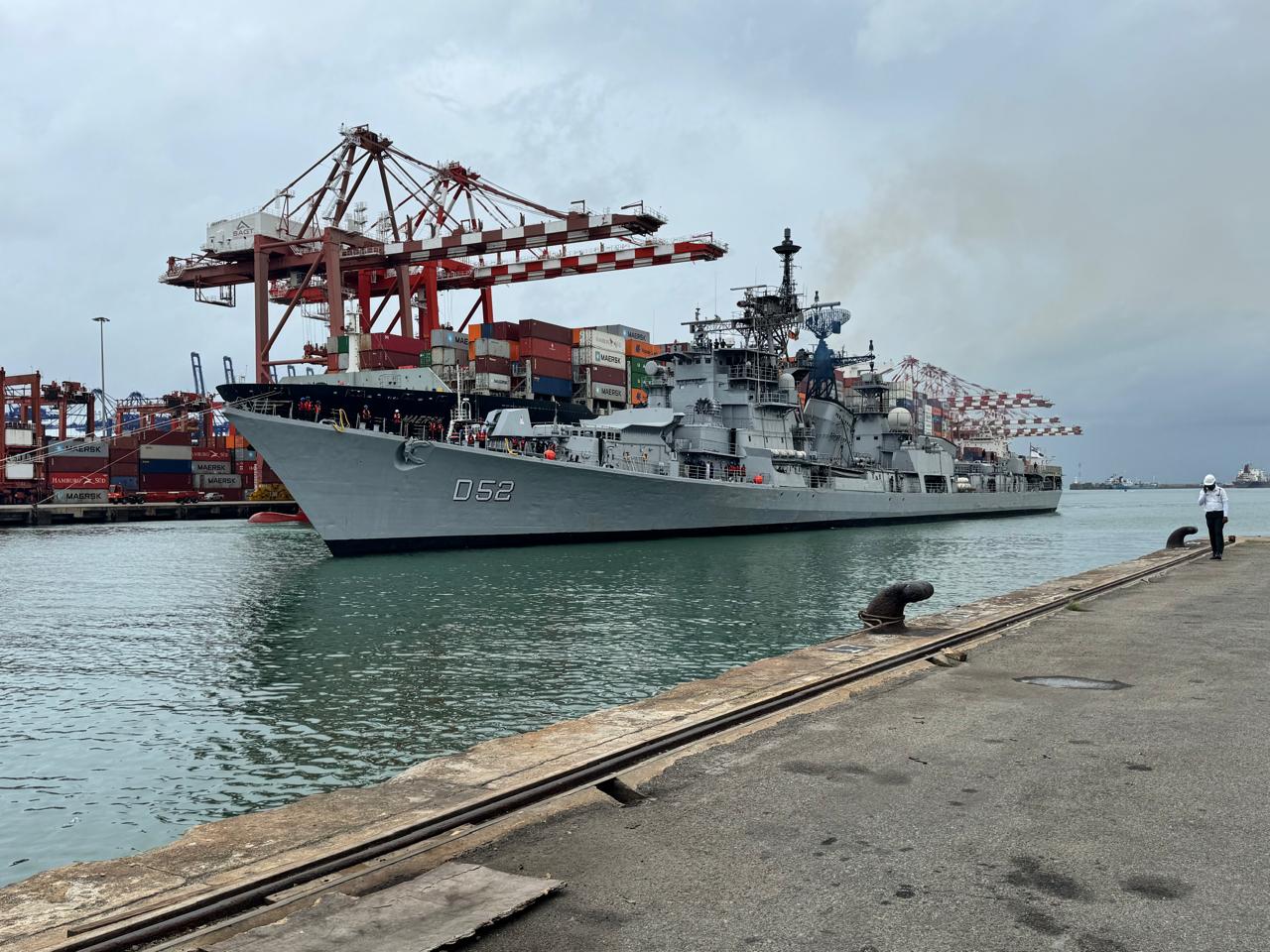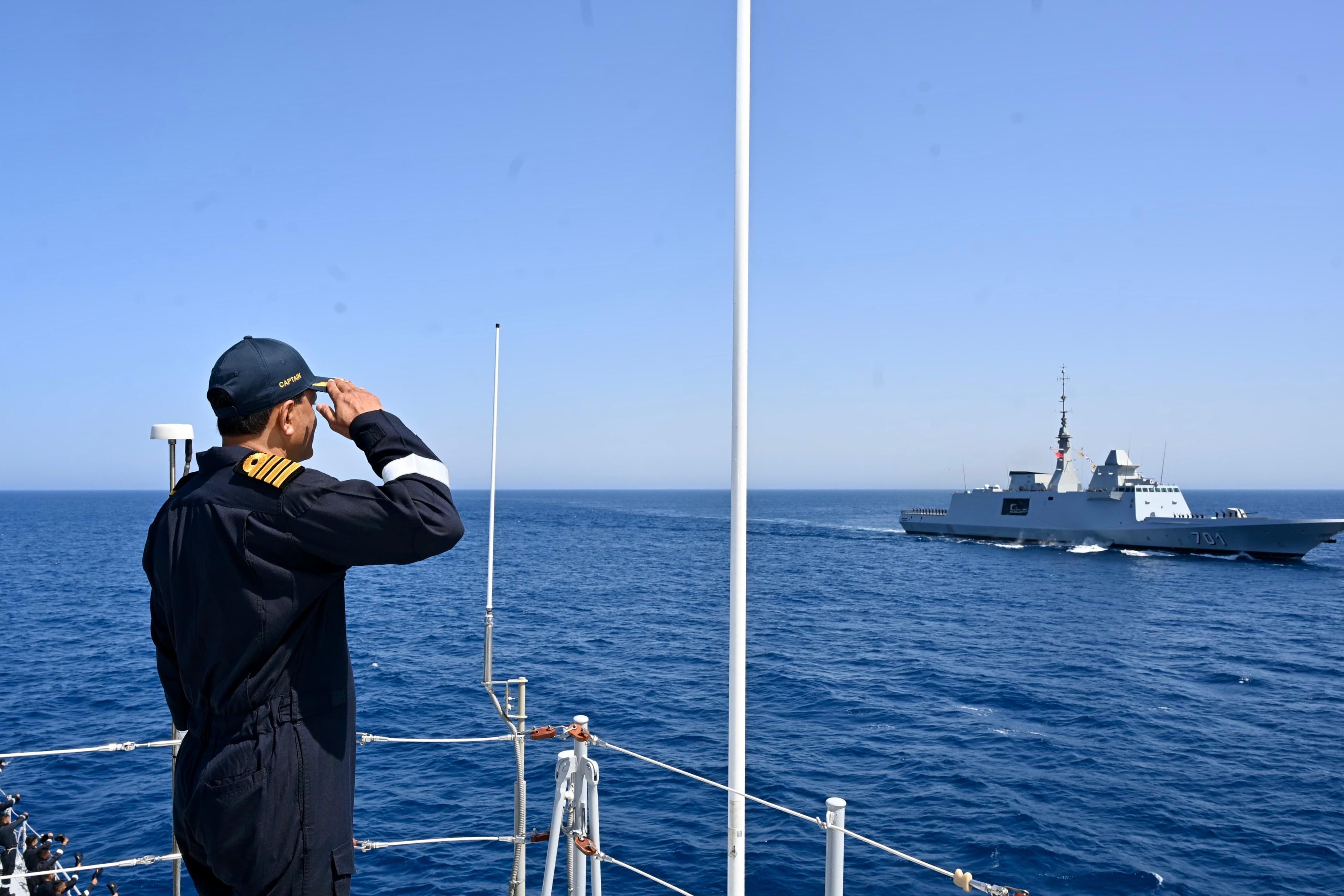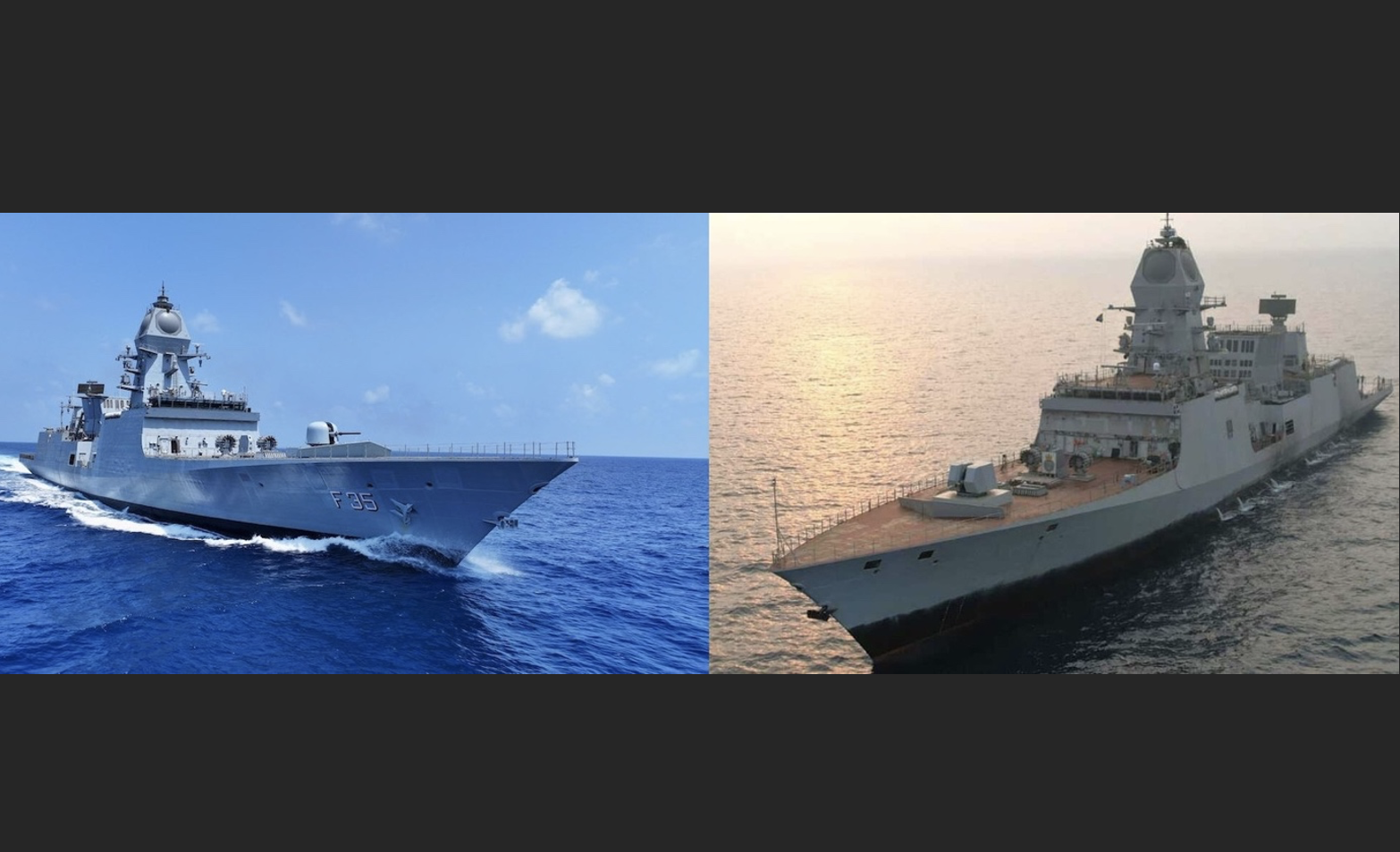 Udaygiri (L) and Himgiri during sea trials.
Udaygiri (L) and Himgiri during sea trials.
New Delhi: The Indian Navy will commission two advanced stealth frigates simultaneously on August 26. This will mark an unprecedented milestone in the country’s naval expansion programme. INS Udaygiri and INS Himgiri will be inducted into service at the Eastern Naval Command headquarters in Visakhapatnam in what officials describe as the first dual commissioning of major surface combatants from separate shipyards.
The ceremony underscores India’s growing shipbuilding capacity and its push toward naval self-reliance, with both vessels representing significant technological advances over their predecessors.
Himgiri was delivered to the Navy on July 31 while Udaygiri reached delivery milestone in record time. The Navy received the frigate on July 1. Both frigates belong to the Project-17A series, officially designated as the Nilgiri-class, which builds upon the earlier Shivalik-class frigates with enhanced stealth features and firepower.
The vessels are equipped with sophisticated weapon systems including eight VLS-launched BrahMos anti-ship cruise missiles, capable of speeds of up to Mach 3, and 32 Barak-8 surface-to-air missiles. This combination provides formidable anti-surface and air defence capabilities that significantly exceed those of earlier frigate classes.
INS Udaygiri, built by Mazagon Dock Shipbuilders Limited in Mumbai, represents the 100th warship designed by the Navy’s Warship Design Bureau. The frigate was completed in just 37 months from launch to delivery, demonstrating improved production efficiency. It carries the name of a previous vessel that served for 31 years before decommissioning in August 2007.
INS Himgiri, constructed by Garden Reach Shipbuilders & Engineers in Kolkata, displaces approximately 6,700 tonnes and features a reduced radar cross-section despite being 5% larger than the Shivalik-class. The vessel revives the name of a Leander-class frigate that was decommissioned in May 2005 after three decades of service.
The ships are fitted with MF-STAR radar systems by Israel Aerospace Industries, providing multi-function surveillance and tracking capabilities. Additional armament includes 127mm main guns, 30mm close-in weapon systems, and torpedo launch capabilities for comprehensive maritime warfare scenarios.
The frigates incorporate advanced stealth design principles with angular superstructures and radar-absorbing materials that minimize their electronic signature. Platform management systems feature increased automation to reduce crew requirements while enhancing operational effectiveness.
The dual commissioning forms part of an accelerated naval modernization drive that has seen multiple indigenous platforms enter service throughout 2025. Earlier inductions this year included destroyer INS Surat, frigate INS Nilgiri, submarine INS Vaghsheer, and specialized vessels INS Arnala and INS Nistar.
The project demonstrates the nation’s indigenous capabilities to design, build and integrate systems for modern stealth combat ships, representing a shift away from foreign dependency in naval construction. The Cabinet Committee on Security approved the Project-17A programme in 2012, with total costs estimated at several billion dollars.
The seven-frigate series, which began with INS Nilgiri’s commissioning in 2024, will provide the Navy with enhanced blue-water capabilities for extended maritime operations. Four vessels are being constructed by Mazagon Dock while Garden Reach Shipbuilders handles the remaining three.
The Navy spokesman, Captain Vivek Madhwal, highlighted the significance of simultaneous commissioning from two separate yards as evidence of expanded production capacity. The achievement reflects improved coordination between state-owned shipyards and enhanced project management capabilities.
The frigates join a fleet that has been rapidly expanding to address security challenges across the Indian Ocean region. Their advanced sensors and weapon systems provide multi-domain warfare capabilities essential for modern naval operations in contested maritime environments.
Both vessels are expected to be assigned to operational squadrons within the Eastern Naval Command, enhancing the Navy’s presence in the Bay of Bengal and broader Indo-Pacific region. Their commissioning represents a significant step toward the Navy’s goal of operating 200 vessels by 2030 as part of comprehensive maritime security strategy.

